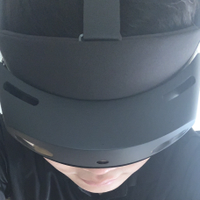【あまたのスタッフブログ AMATA Matters(あまたま)】
*English translation below
物凄くふざけているようで本当は不真面目だったり。
まるで妄想ばかりの作り話のようで実のところ架空の話だったり。
そんなブログであなたの脳ミソをいい感じにトロッとさせたい。
こんにちは 平和主義ブロガーの超ごろーです
前回のMayaの話の後に3DCG関連のどーでもいい話をもう一度しよーかなとネタを考えていたのですが、よく考えたらデザイナー。そして3DCGをある程度触った事のある人しか分からない記事だよな・・・
と思いました。
そこで今回は3Dのモーションデザイナー以外の人から良く聞かれる質問を取り上げました。
ズバリ、
「Rig(リグ)ってなんなの?」
です。
こちらは3Dをやっているモデラーさんなどからも聞かれる事がありますし、エンジニアや企画さん。ディレクターやプロデューサークラスの人からも聞かれる事があります。
いろんな人から聞かれるけど、完成したゲームにはRigなんてものは存在しないし、組み込むモーションデータにもRigなんてものがありません。
そりゃ完成データに実装されないデータなんてイメージできませんよね。
モーションデザイナーは「Rigがないと作業ができない」とか言うし、大手の会社だとRigを専門的に制作するチームがあったりする。
人によっては「Rigなんて1日で作れるよ」という人がいるかと思えば、「検証も含めて数か月かかります」ってな事を言う人もいる。
もうどれがほんとで、何がRigなんやろ? って誰もが思うでしょう。
結論から言うと「Rigがないとモーション作業ができない」以外は全部ほんとです。
ただし、Rigがないと気が遠くなるような作業時間がかかる場合があるのでモーション作業にはRig必須と思ってください。
そして。。。。
これだけは超ごろーの心の叫びとして、声を大にして言わせていただきたい!
っていうか言う!!!
———————————————————–
ホンキのRig構築はちょっとやそっとの知識でどーにかなるものではないのです! 気楽に「すぐできるでしょ?」とか言ってはいけない!
あってもなくてもいい物という認識は捨てるべし!
リガー(Rigを作る人)を生産性ゼロの不要な職種と考えてる人はすぐその場で抹殺OKな世界を求む!!!!!!!!!
はぁはぁはぁ。。。
多くのリガーはこの意見に同意してくれると思うので、ぜひ一番下の「素晴しく【いいね】」 ボタンをよろしく。
別に興味ねーし、オレRig作らねーし! という方はぜひ一番下の「どうでも【いいね】」 ボタンをよろしく。
———————————————————–
さて、少し本筋から外れましたが、専門的な用語や会社ごとに呼び名が違うような部分を極力排除しながら説明していきましょう。
・Rigとは
『キャラクターに動きをつける為に、キャラクターをコントロールする仕組みの事です』
上の言い方は「Rigって何?」と聞くとよく返ってくる答えです。
でもまだピンときませんよね。
ではデザイナーでない人でも分かるように説明します。
下の絵をご覧ください。
ロボットのラジコンです。

ロボットをプロポ(操作器)で操縦(コントロール)するわけですが
Rig: プロポ(操作器)
↑(コンストレイント) 電波
キャラモデル: ロボット本体
という事です。
上向矢印はプロポの動きに追従する為に繋がっている電波です。
3DCGで言うとコンストレイントですが、これについては前回のお話『超 Maya』で説明していますので、そちらを参考にどうぞ
完成データにはキャラモデルと、そこに入っているモーションデータだけが使われるので、Rigそのものはモーション制作段階でしか使わない物となります。
モーション付けの作業は、このRig部分の出来によってクオリティと作業時間に大きな差が出てきます。
Rigが何なのかは、形で見ると分かりやすいですよね。
そしてもう少し踏み込んでRigの中を分解すると、実はキャラクターモデルを簡単に制御する為の仕組みがいっぱい仕込まれている事が多いのです。
Rigの中身は大きく分けると、『便利にする仕組み部分』と『コントロール部分』になります。
先ほどのロボットラジコンのプロポ(コントローラー)で再度考えてみます。
プロポを分解してみましょう。
●スティックやボタン = 『コントロール部分』
●中身に入ってるプログラム = 『便利にする仕組み部分』
となります。
■コントロール部分
コントローラと通常言われますが、直接モーションのキー(注1) を打って動きつける部分になります。
プロポで言えばスティックだったり、ボタンだったりです。
■便利にする仕組み部分
(ちょっと乱暴な説明になりますが以下の様な感じ)
〇Bボタンを押すと歩き→走り に切り替わる
〇スティック下+Bボタンを同時に入れるとバックステップ
〇Cボタンでジャンプ
〇ジャンプ中に再度Cボタンを押せばブーストジャンプ
みたいな仕組みをプログラムしておく感じです。
そして便利にする仕組み部分は、多くのRig制作者が常に試行錯誤して改良していってるわけです。
・もしもBボタンで走りに切り替わらなかったら、走るという動きを付けられないRigになります。
・もしもCボタンでジャンプという仕組みを用意していなければ、このロボットはジャンプという動作ができないRigになります。
・逆に言えば、Cボタン長押し = しゃがみ という仕組みを追加すれば、しゃがみ動作もできるようになります。
どうでしょう。
Rigの仕組みしだいでさまざまな動きのパターンを簡単に付けられるわけです。
Rig制作者は、どれだけ簡単に。分かりやすく。手間をかけずに目的の動きをさせられるかを考えて仕組みを作っていくのです。
又、コントローラ部分のみで制御するのではなく、Rigの制御パネルを別に用意して操作させる場合もあります。
このへんになってくると、もはやRig制作のもう一段階上。
MelやPython(注2)などのスクリプトを使った仕組みにまで発展していきます。
なんとなくRigってものの正体が見えてきました?
やっぱりまだ分かりにくい?
そんなに簡単ではないかもしれませんね。
分かったのは、
・モーションをつける為の仕組みなんだって事
・なんだかややこしい物だって事
だと思います。
でもまぁ、実際に作らない人にとってはそのくらいでもいいと思います。
興味のある人は自分でも調べてみてください。いろんな疑問が出てくるはずです。そして勉強してみてください。
気が向いたらそのうち改めてRigまわりのお話するかもしれません。
気が向いたら。。。ねw
(平和主義ブロガー 超ごろー)
1)キーとはキャラクターなどを動かした時に、動いたポーズを保存するアニメーションキーの事。
アニメーションはこの保存されたキーのポーズ間を補間する事で動きがつけられます。
2)mel、pythonはMayaで使われるスクリプトです。
Mayaを便利に使う為のツール類を作る時によく利用されます。
楽する為の努力を惜しまない超ごろーの御用達機能の一つです。
http://blog.amata.co.jp/2018/08/01/rig/
Cho Rigging
It’s the sort of thing that seems very silly, but is actually just insincere.
The sort of story that sounds like one big delusion, but in truth is just crafted fiction.
That is just the sort of content I aim to slather your senses with.
Good day, readers. Your peace-loving blogger Cho Goro here once again.
After my last piece on Maya, I thought about doing another kind of lame story about 3D design, but in hindsight, that sort of article would be somewhat impenetrable to anyone but other artists, or at least those with some level of experience with 3D graphic design.
And so, instead I’ve decided to tackle a question often asked by those not in the field of 3D animation.
To put it simply:
“What is a ‘rig’, anyway?”
It’s a question asked by a wide variety of folks, from 3D modelers, to engineers, to game designers, and even higher-ups like directors and producers.
You’ll be asked this quite a lot, but the truth is in a finished game, or even in the animation data used for the models, you won’t find a “rig”.
Pretty hard to picture some component data that isn’t directly included in the finished product, right?
Animators say things like “I can’t do my work if I don’t have a rig,” and there are even specialist teams in major firms dedicated to making rigs.
There are those who say “oh I can make a rig in a day flat,” and those who say “it could take months,” including certification.
So what’s real, and what the hell is a “rig” anyway? Anyone would be confused.
At a minimum, everything aside from “I can’t do animation work without a rig” is all true.
Do be aware, however, that without a rig, your work time will reach absurd lengths, so it is essentially necessary.
And…
There’s one thing I would like to say to you all! Just think of it as my scream into the void.
Well…I’m going to say it anyway!!!
———————————————————–
You can’t do serious rig work with just some half-assed picked-up-off-the-street expertise! I won’t stand for anyone who says “oh, they’re a cinch to make, right?” I just won’t!
Discard your preconceived understanding of it as a valueless object!
I desire a world where those who think Riggers (those who make rigs, naturally) are useless and have no productivity are obliterated on the spot!!!
Haa…Haa…
I think most Riggers will agree with my stance, so please give me a click on the “[Like], right on!” button at the bottom of the page. For those who don’t give a rat’s ass, and won’t make rigs anyway, all the same I ask you to give me a click on the “[Like], whatever!” button below.
———————————————————–
All right, so I got a bit off-track there, but let’s get into the meat of the matter. I’ll avoid using any overly-complicated jargon or corporate-specific terms as we go.
・What is a rig?
“A rig is a mechanism for assigning movements and control functions to characters.”
This is by far the most common response to the “what is a rig” question I mentioned above.
But…this is still a bit hard to grasp, I think.
So now I’ll interpret this for our non-artists at home.
Have a look at the image below. It’s a remote-control robot.

The robot is controlled via a transmitter.
Rig: Controller
↑(Constraint) Radio waves/signals
Character model: The robot
The upwards-facing arrow refers to the radio signals used to control the movements sent to the transmitter.
In 3D graphics terms, this is known as a “constraint,” so for more info on that, please refer to my previous piece: “Cho Maya”.
In a finished product, only the character model and the created animation data is actually used, so rigs are only used at the production stage of any given game.
Depending on the quality of the rig, the quality and necessary time to create any animations can vary greatly.
To understand what a rig is, it certainly helps to look at an object.
If we dive in a bit further and look at the inside of a rig, we can see that in many cases it is full of mechanisms designed to help easily control the movements of its character model.
Categorizing these further, there are largely two types, “parts to make things more convenient”, and “control parts”.
Let’s think about this again, using the previous example of a remote-control robot’s transmitter (its controller).
Breaking down the controller’s parts:
- The control stick and buttons = “control parts”
- Internal programming = “parts to make things more convenient”
■Control Parts
Often simply thought of as “controllers”, these are parts that trigger key animations (*1) and movements.
In terms of the robot, this includes the stick, and the buttons.
■Parts to Make Things More Convenient
(A kind of rough explanation, but something like the following)
〇Pressing the B Button changes from Walk Mode to Run Mode
〇Pressing the B Button and the downward motion on the stick simultaneously triggers a back-step
〇Pressing the C Button triggers a jump
〇Pressing the C Button again while in mid-air triggers a boost jump
It’s an array of programs and mechanisms that allow for different actions.
It’s these convenience parts that many Riggers spend so much time and trial-and-error on.
・Without the B Button’s function of switching to Run Mode, the robot would not be able to run using this rig.
・Without the C Button’s function for jumping, the robot would not be able to jump using this rig.
・Conversely, if you were to add a function that a prolonged press of the C Button causes the robot to crouch, the robot would then be able to crouch.
What do you think?
Using the functions of a rig, you can assign a wide array of possible function patterns with ease.
Rig makers think about just how simply, how concisely, and how effortlessly they can create mechanisms to achieve their desired movements.
There are also cases where control is not only done through the aforementioned “control parts”, but where a separate control panel is made for the rig.
After getting through this much, there’s one more step in rig-making.
You then go on to making mechanisms using Mel and Python (*2) scripts.
Have you started to understand just what a rig really is?
Still a bit foggy?
It’s not an incredibly simple concept to understand, I admit.
But what as for what we do know now:
・It’s a mechanism for assigning animations/movements
・It’s kind of a pain in the ass
I think at least those two points are quite clear.
But, well, I think for folks who won’t actually be making rigs on their own, about that much is probably good enough.
If you find yourself curious after reading this, feel free to investigate further for yourself.
You’ll likely have a few new questions of your own. Use the opportunity to study how it works.
If I feel like it, I may even cover more information on rigs.
If I…feel like it…yeah. *laughs*
(Your Peace-Loving Blogger, Cho Goro)
1) “Keyframe animations” are animations used to hold the pose of a character in place when they move.
By filling in the “gaps” in between these keyframe animations, different motions are created.
2) Mel and Python are scripts used in Maya.
They are often used to create tools and plugins to make Maya more convenient to use.
They’re tools of the trade for Cho Goro, a man who spares no effort to make life easier for himself.
/assets/images/27996/original/dcdf60d1-bf71-402e-b67d-5eb4b58b20c8?1510202660)


/assets/images/27996/original/dcdf60d1-bf71-402e-b67d-5eb4b58b20c8?1510202660)


